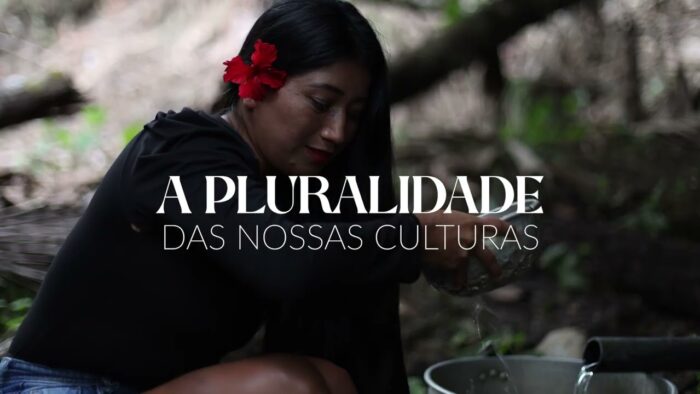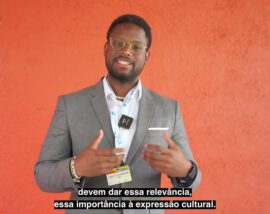Organization: International Organization for Migration
Country: Costa Rica
Closing date: 16 May 2017
Position Title : Resources Management Officer
Duty Station : San Jose, Costa Rica
Classification : Professional Staff, Grade P2
Type of Appointment : Fixed term, one year with possibility of extension
Estimated Start Date : As soon as possible
Closing Date : 16 May 2017
Established in 1951, IOM is the leading inter-governmental organization in the field of migration and works closely with governmental, intergovernmental and non-governmental partners. IOM is dedicated to promoting humane and orderly migration for the benefit of all. It does so by providing services and advice to governments and migrants.
IOM is committed to a diverse and inclusive environment. Applications from qualified female candidates are especially encouraged. For the purpose of the vacancy, the following candidates are considered as first-tier candidates:
1. Internal candidates
2. Qualified applicants from the following NMS countries:
Antigua and Barbuda, Benin, Bahamas, Botswana, Belize, Congo, Cabo Verde, Djibouti, Micronesia (Federated States of), Gabon, Gambia, Guyana, Iceland, Cambodia, Comoros, Lesotho, Luxembourg, Libya, Montenegro, Marshall Islands, Mongolia, Mauritania, Maldives, Namibia, Nauru, Papua New Guinea, Paraguay, Seychelles, Slovenia, Suriname, El Salvador, Swaziland, Timor-Leste, Trinidad and Tobago, United Republic of Tanzania, Holy See, Saint Vincent and the Grenadines, Venezuela (Bolivarian Republic of), Vanuatu, Samoa
Context:
Under the overall guidance of the Regional Director (RD) for Central America, North America and the Caribbean, the direct supervision of the Senior Regional Resources Management Officer (SRRMO) and in close coordination with the Administrative Centres in Manila (MAC) and Panama (PAC), also, with the Division of Accounting and Financial Reporting (ACO) at Headquarters (HQ), the successful candidate will be responsible and accountable for monitoring the administrative, budgetary, financial, information technology, procurement, logistics and human resources functions to provide resources management support to the Regional Office (RO) and its Country Offices (COs).
Core Functions / Responsibilities:
- Provide resources management support to the RO and its COs including, but not limited to:
a) Assist the RO and COs in matters related to administrative and financial issues. Assist in reviewing existing procedures and, if necessary, recommend possible improvements to strengthen internal monitoring, evaluation, and control systems and improve efficiency and effectiveness.
b) Assist in monitoring financial and human resources dashboards of projects budgets and
analyze variances between budget and actual expenditures and project commitments. Support
M&E Unit on identify and develop tools to improve project M&E in the region
c) Assist the SRRMO in preparing donor financial reports and ensure they are consistent with the narrative reports;
d) Provide support, to local staff in the region, in the areas of finance, human resources, project administration, logistics and procurement, and give assistance to Identify, systematize and disseminate best practices on financial and administrative activities in the region, including undertaking duty travel to COs;
e) Assist in the preparation of the Budget of the RO and reports that may be required in coordination with the SRRMO.
f) Update regularly the RO Business Continuity Plan (BCP)
- Provide resource management support to small IOM Missions in the region due to lack of internal capacities, including, but not limited to:
a) Support the preparation of financial requirements, project budgets and related funding agreements; Monitor the financial management for the projects, financial projections and monitoring tools;
b) Assist in the implementation of administrative and human resources policies and practices;
c) Support in the timely and accurate personnel administration and payroll processing and ensure proper documentation with regards to payroll and personnel administration;
d) Monitor and further strengthen appropriate internal controls and provide support in the implementation of relevant operational control systems;
e) Provide support on developing financial and administrative plans to measures financial sustainability in country offices including risk analysis.
- Assist the SRRMO in managing the human resources function, recruitment processes, retention, promotion and separation of local staff, in the region and the RO including, but not limited to:
a) Assist the SRRMO in implementing IOM’s Human Resources policies, rules and regulations, as well as standards; and ensure that the COs’ administrative procedures are in place and followed and are in accordance with these practices;
b) Monitor the personnel administration of RO San Jose staff, for local staff currently performed by CO San Jose, so as to ensure processes are followed correctly and that documentation is correct; review contracts, extensions and personnel actions forms.
c) Ensure timely and regular implementation of the Staff Evaluation System (SES) in the RO
and in the CO in the region;
d) Assist the SRRMO in the recruitment processes in the region and in the RO;
e) Assist the SRRMO in coordinating staff trainings in the RO and in the region in the relevant areas of human resources management including PRISM HR;
f) Assist in the preparation of reports that may be required in coordination with the SRRMO, RD
or HRM;
g) Support the SRRMO in reviewing the maintenance of the PRISM HR Module in the COs to keep the information accurate and up-to-date, and ensure the regular updating of the COs and the RO organigramme.
- Perform other duties as may be assigned.
Required Qualifications and Experience:
Education
• Master’s degree preferably in Business Administration, Finance, Management, or Public Administration or a related field from an accredited academic institution with two years of relevant experience; or
• University degree in the above fields with four years of relevant professional experience.
• Professional certification as chartered accountant (CA) or certified public accountant (CPA), Chartered Institute of Management Accountants (CIMA), or Association of Chartered Certified Accountants (ACCA) will be a distinct advantage.
Experience
• Experience in financial management, accounting and budgeting;
• Experience with internal control assessment, internal audit and/or external audit;
• Extensive knowledge of IOM internal procurement, assets management, administrative and financial rules, as well as IOM’s PRISM elements; good knowledge of HR;
• Good knowledge of IOM’s regulations, policies and procedures preferred;
• Good knowledge of IOM accounting systems – PRISM FI, MM and HR modules;
• Knowledge of the region is an advantage.
Languages
Fluency in English and Spanish is required.
Desirable Competencies:
Behavioral
• Accountability – takes responsibility for action and manages constructive criticisms;
• Client Orientation – works effectively well with client and stakeholders;
• Continuous Learning – promotes continuous learning for self and others;
• Communication – listens and communicates clearly, adapting delivery to the audience;
• Creativity and Initiative – actively seeks new ways of improving programmes or services;
• Leadership and Negotiation – develops effective partnerships with internal and external stakeholders;
• Performance Management – identify ways and implement actions to improve performance of self and others;
• Planning and Organizing – plans work, anticipates risks, and sets goals within area of responsibility;
• Professionalism – displays mastery of subject matter;
• Teamwork – contributes to a collegial team environment; incorporates gender related needs, perspectives, concerns and promotes equal gender participation;
• Technological Awareness – displays awareness of relevant technological solutions;
• Resource Mobilization – works with internal and external stakeholders to meet resource needs of IOM.
Other:
Internationally recruited professional staff are required to be mobile.
Any offer made to the candidate in relation to this vacancy notice is subject to funding confirmation.
The list of NMS countries above includes all IOM Member States which are non-represented in the Professional Category of staff members. For this staff category, candidates who are nationals of the duty station’s country cannot be considered eligible.
Appointment will be subject to certification that the candidate is medically fit for appointment, accreditation, any residency or visa requirements, and security clearances.
How to apply:
Interested candidates are invited to submit their applications via PRISM, IOM e-Recruitment system, by 16 May 2017 at the latest, referring to this advertisement.
For further information, please refer to:
http://www.iom.int/cms/en/sites/iom/home/about-iom-1/recruitment/how-to-apply.html
In order for an application to be considered valid, IOM only accepts online profiles duly completed.
Only shortlisted candidates will be contacted. You can track the progress of your application on your personal application page in the IOM e-recruitment system.
Posting period:
From 03.05.2017 to 16.05.2017
Requisition: VN 2017/105 (P) – Resources Management Officer (P2) – San Jose, Costa Rica (55052093) Released
Posting: Posting NC55052906 (55052906) Released


